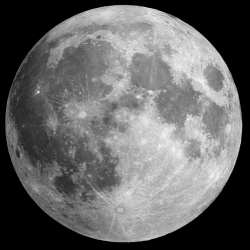
Scientists believe that about 4 billion years ago, during a period called the Late Heavy Bombardment, the moon took a severe beating, as an army of asteroids pelted its surface, carving out craters and opening deep fissures in its crust. Such sustained impacts increased the moon’s porosity, opening up the surface.
Now scientists at MIT and elsewhere have identified regions on the far side of the moon, called the lunar highlands, that may have been so heavily bombarded, particularly by small asteroids,that the impacts completely shattered the upper crust, leaving these regions essentially as fractured and porous as they could be. The scientists found that further impacts to these highly porous regions may have then had the opposite effect, sealing up cracks and decreasing porosity.
The researchers observed this effect in the upper layer of the crust, a layer that scientists refer to as the megaregolith. This layer is dominated by relatively small craters, measuring 30 kilometers or less in diameter. In contrast, it appears that deeper layers of crust, that are affected by larger craters, are not quite as battered, and are less fractured and porous.
Jason Soderblom, a research scientist in MIT’s Department of Earth, Atmospheric and Planetary Sciences, says the evolution of the moon’s porosity can give scientists clues to some of the earliest life-supporting processes taking place in the solar system. Ultimately, tracing the moon’s changing porosity may help scientists track the trajectory of the moon’s impactors 4 billion years ago.
“What we really hope to do is to figure out the number of impacts in the range of 100 kilometers in diameter, and from that, we can extrapolate to the smaller craters, assuming different populations of impactors, and those different assumptions will tell us where the impactors came from,” Soderblom says. “This will help to understand the origin of the Late Heavy Bombardment, and whether it was disrupted material from the asteroid belt, or if it was further out.”
